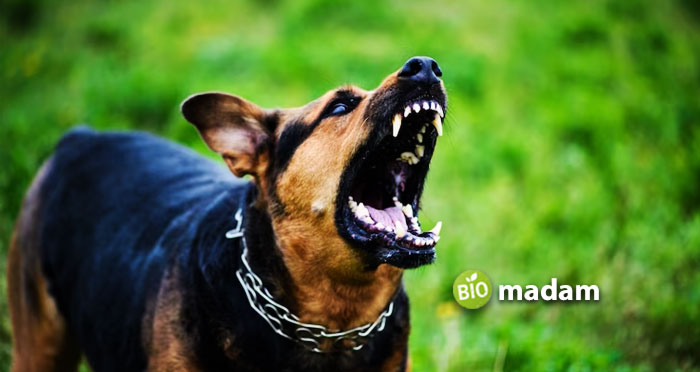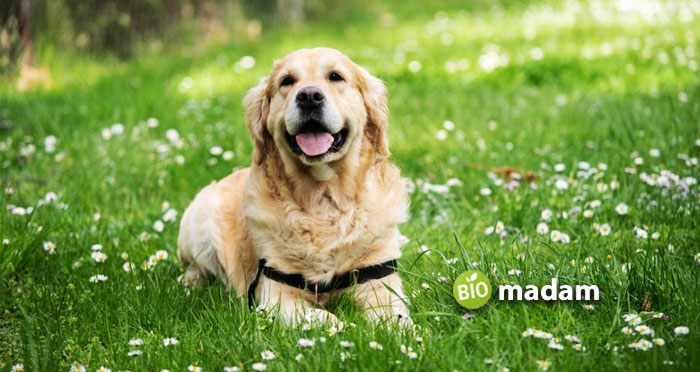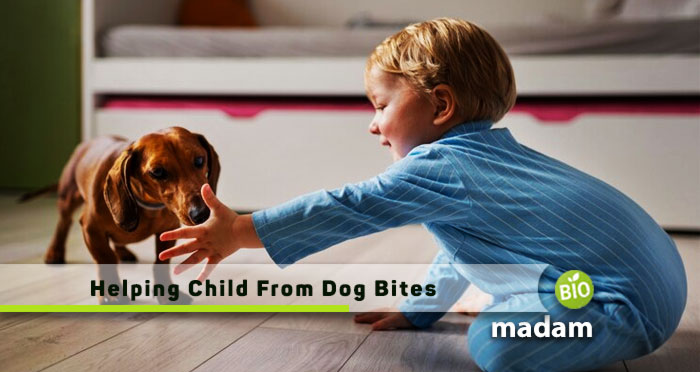Childhood is a time of laughter and play, often accompanied by a furry companion. While the bond between kids and dogs is heartwarming, it’s crucial to ensure these moments are safe and happy. Dog bites, though rare, can happen, and as caregivers, our job is to prevent them. This article is your guide on “How to Help Your Child Be Safe from Dog Bites.”
We’ll explore practical tips, understand dog signals, and create positive connections, all to keep the smiles wide and the tails wagging in our little ones’ worlds.
Understanding Dog Behavior
Understanding why dogs may bite is crucial for preventing such incidents. Teaching children about the emotions dogs experience, recognizing signs of stress, and empowering them to interpret canine cues are essential steps. Dogs communicate through body language, expressing various emotions. Recognizing stress indicators, like flattened ears or a tucked tail, helps children understand a dog’s comfort level.
Teaching the difference between friendly and aggressive behavior, such as a wagging tail versus a rigid posture, equips children with the skills to interact safely. This knowledge not only enhances safety but also fosters empathy, building a bond based on mutual understanding and reducing the risk of dog bites.
What Happens When a Child Gets Bitten by a Dog?
When a child gets bitten by a dog, it can lead to various immediate consequences and potential challenges. Firstly, there is the physical aspect, where the severity of the bite can range from minor cuts to more significant injuries affecting muscles, bones, and nerves. Some bites may seem minor on the surface but could pose deeper risks.
Additionally, there’s the risk of infections, including rare but serious concerns like rabies, which must be addressed promptly. Immediate medical attention is often required to assess the extent of the injury and prevent complications.
Moreover, the emotional impact on the child should not be underestimated, as a dog bite can lead to fear, anxiety, or trauma. Communicating crucial information to healthcare professionals, such as details about the dog and the circumstances of the bite, becomes vital for appropriate treatment.
How to Protect Your Young Child from Dog Bites
Keeping your child safe around dogs involves some simple steps. From understanding how to pet gently to recognizing when a dog feels threatened, these tips ensure positive interactions. Explore these helpful measures contributing to a safer environment for your child and furry friends.
Teaching Gentle Petting
Instructing children on how to pet a dog gently and avoid rough handling is essential. Dogs may react negatively to aggressive or overly enthusiastic petting.
Understanding Dog Body Language
Educating children about basic dog body language signals, such as a wagging tail, relaxed ears, or a loose body, helps them gauge a dog’s mood and respond accordingly.
Avoiding Unfamiliar Dogs
Encouraging children to avoid approaching unfamiliar dogs, especially those without an owner present, reduces the risk of unexpected reactions.
Recognizing Warning Signs
Teaching children to recognize warning signs such as growling, baring teeth, or raised hackles can help them understand when a dog feels threatened.

Not Disturbing Dogs While Eating or Sleeping
Emphasizing that dogs may be protective of their food or space when eating or sleeping and advising children not to disturb them during these times.
Seeking Permission before Approaching a Dog
Instilling the habit of seeking approval from dog owners reinforces respect for personal space and promotes safe encounters.
Approaching Dogs Slowly and Calmly
Instructing children on the benefits of a gradual approach and avoiding sudden movements minimizes the risk of startling a dog.
Importance of Supervision During Interactions
Emphasizing the need for adult supervision ensures controlled and secure interactions between children and dogs.
Respecting a Dog’s Personal Space
Educating children about the significance of personal boundaries and avoiding disturbances during a dog’s essential activities promotes mutual respect.
Teaching the Difference between Play and Aggression
Helping children understand the distinction between playful behavior and aggression ensures they can engage with dogs in a positive manner.
Encouraging Positive Associations
Advising children to associate positive experiences with dogs, such as offering treats or playing together, helps build trust and a positive relationship.
Promoting Responsible Dog Ownership in the Community
Encouraging community initiatives that promote responsible dog ownership, such as leash laws, proper fencing, and regular vet check-ups, contributes to overall safety.

Preventive Measures for Parents
Parents can take preventive measures to ensure a safe environment for their children around dogs. Consulting professionals to assess the suitability of a dog’s breed and considering their temperament and compatibility with children is crucial. Emphasizing the role of vaccinations in preventing aggressive behavior and ensuring routine check-ups contribute to responsible pet ownership. Additionally, promoting obedience training and using positive reinforcement methods can foster well-behaved and less aggressive pets.
Dog Bite Safety Tips for Children
Ensuring a harmonious relationship between children and dogs involves practicing essential safety measures. Here are some vital tips to follow:
- Always Ask For Permission From The Dog Owner Before Approaching.
- Approach dogs slowly and calmly to avoid startling them.
- Let the dog sniff your hand before attempting to pet.
- Avoid disturbing dogs while they are eating, sleeping, or caring for their puppies.
- Recognize common warning signs of a dog feeling uncomfortable.
- Pet dogs gently, avoiding rough handling.
- Supervise interactions between children and dogs closely.
- Create a designated safe space for the dog to retreat if needed.
- Educate about the importance of personal space for dogs.
- Know when to back away if a dog seems disinterested or tired.
What Damages are Recoverable from a Dog Bite Injury to My Child?
If your child has suffered a dog bite injury, you may be eligible for compensatory damages to address various aspects of the incident. These compensatory damages can include:
- Medical Bills: All medical expenses related to treating the child’s injuries, including emergency services, ambulance fees, hospital services, physician’s fees, and medication.
- Lost Wages or Income: If the child’s injuries result in a parent or guardian having to miss work to care for the child during recovery, compensation for lost wages.
- Lost Earning Potential: If the child sustains severe injuries affecting their future ability to work, compensation for the lost earning capacity.
- Physical Pain and Suffering: Damages for the physical pain and suffering experienced by the child due to the dog bite, including any required surgeries, medications, or therapy.
- Emotional Trauma: Compensation for emotional injuries the child may suffer, such as fear of dogs, anxiety, sleeping difficulties, depression, or post-traumatic stress disorder (PTSD).
- Property Damage: Reimbursement for any damage to the child’s personal property or clothing during the dog bite incident.
- Loss of Consortium: If the child’s injuries impact the relationship between the child and their parent or guardian, damages for loss of consortium may be considered.
Conclusion
Creating an environment that nurtures the special bond between children and dogs, while prioritizing safety, is attainable through education and vigilance. By teaching kids to interpret canine cues, respect boundaries, and interact positively, we empower safer connections. With preventative measures and open communication between caregivers and owners, we promote responsibility on both sides. Ultimately, an ounce of prevention now saves pounds of cure later. When harmony is the goal, the whole community wins – the two-legged and four-legged alike.

People call me Domonique Smith in Ross! I was always fond of helping people, so opted an MBBS degree to pursue my passion as my career. My major interests fall in dealing with pregnant ladies and helping them in the best of my wills for their comfort. I am further planning to choose Gynecology as my major, so wish me luck!

